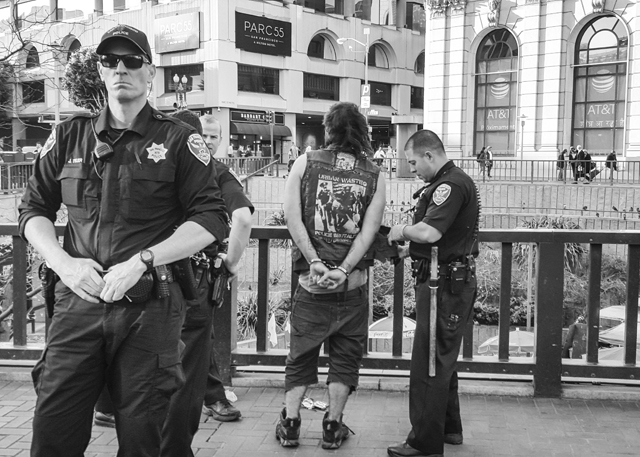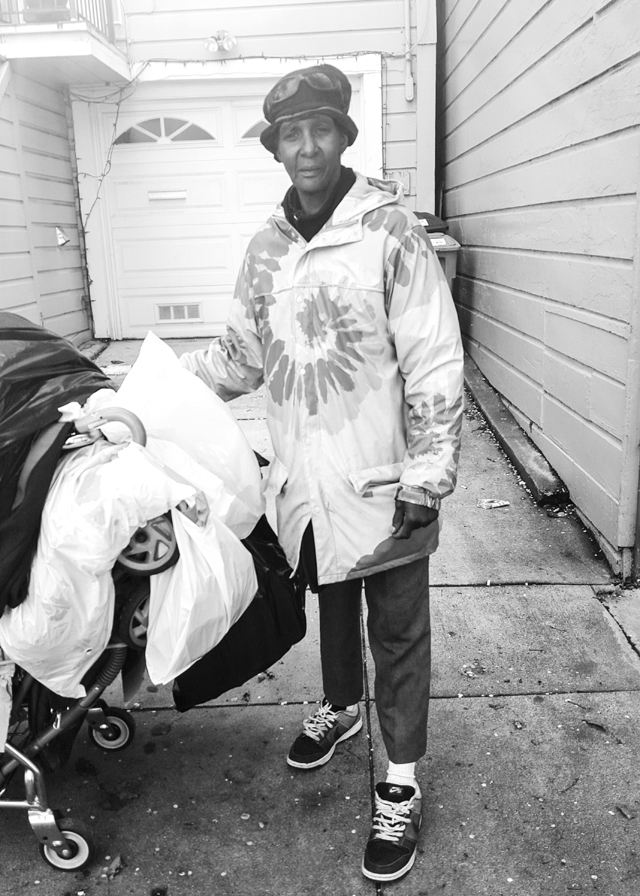
Photos by Kappy. These are excerpts from a zine called “Basket Case”. I had an idea to do an online retail zine store, we tried it for a year or so. This store was called “Zine Kong” and we sold zines from all over the world. I wanted every order to come with free zines. I was hoping the publishers would include free zines, but instead I just published the free zines and added them to the orders. One of these zines was this one by Kappy. The site didn’t work because it needed lots more money and lots more time. Anyways, this post is not about that.

I was talking with Troy Holden the other day about his photos in our latest issue. He was tripping on seeing some of the photos in black and white because he had shot them in color. I said that, for me, once I make a photo in black and white, I try to just keep it in black and white for the rest of it’s life. But it got me thinking about a lot of things. So I just wanted to share some of these thoughts with you.

I learned photography in the traditional sense. I processed my own film and printed everything in a darkroom. You start learning from the past masters and you begin to honor the formats. Henri Cartier Bresson didn’t ever want his photos cropped. He composed his image with the frame of his viewfinder. He printed with the black border of the negative so that every one knew its not cropped. I imagine him and Robert Capa and other photo buddies getting drunk, making up Magnum Photo Agency and being like, “..And nobody will ever crop my photos again!..”. That’s how they started their crew, drinking wine all night. “Magnum” is the larger size measurement bottle of wine. I always joked that if it was started in the 90s, the crew would be called “40s” or “40 oz.”

It was a photo revolution and editors and art directors and designers now had to bow down and pay photographers properly and not crop photos. Square photos were printed square, everything was printed the sprockets holes and clips marks and frame numbers etc. Not everything but you get the idea. But newspapers and magazines still had their job to do, they still had columns and pages to fill and if your photo didn’t fit, they will find someone else’s photo that does fit.

So today I was thinking about page formats and publishing formats. Your photo is not the same size as any of the paper you will print it on. Sometimes I think this is why the 6×7 format was invented, for magazine pages. Added to the mix nowadays we have website formats, blog formats, and social media formats. Instagram even with all the crop tools is still best suited for square. Most of the internet is best suited for horizontal photos. And I think blogs, especially on phones or tablets, are best suited for vertical photos.

How do you deal with your photo formats of negatives, scans, digital photo files, cell phone files, etc? And then how do you deal with it’s possible corresponding display formats of work print, framed print, portfolio, website, blog, social media? “No rules but 1: no rules.” That was a lyric by my friends’ band called S.T.R.E.E.T.S. It was an acronym for “Skating Totally Rules Everything Else Totally Sucks.”

One day I went to a Robert Frank show. In this exhibit they had his proof sheets on display too. A couple of his most famous vertical photos, you could see in the proofs with crop markings, were originally shot horizontally. So if Robert Frank, the Godfather of black and white photography, can do whatever he wants then you can too.

I chose Kappy’s photos for this post because he doesn’t care. Actually, I can’t speak for him. But I don’t think he cares. He doesn’t have a computer or a camera. He shoots everything on his phone. He updates his IG in color and he makes his zines, Later Dudes, in black and white. He goes to Walgreen’s, sits down at one of those photo kiosk things, plugs in his phone and prints out hundreds of photos. He goes home and with scissors and tape and glue he makes the layout of his zine. And then he makes copies at Office Depot. It’s affordable.

When I shot film, I only shot black and white. I think I liked to process film more than I liked to print. These days, I shoot digital. Mostly my phone and then various cameras, I haven’t found the one yet, but every year I buy a new one and sell an old one. That’s for another post. I get my files into Photoshop and right away convert them all to black and white. Actually, that’s not all the way true. I do shoot things and keep them in color if I think they should stay in color. And I do shoot assignments that are meant to be published in color. I edit them ready for the largest print size I can make from it. They live on my hard drive like that and when it is time for a zine or a book or a wall or a website, I will then again re-size it for that particular project. On the other hand, sometimes I just want a quick update to my blog. Let’s see what’s on my phone and it gets uploaded with out any editing. And usually, those photos too will later end up converted and ready for action.

Anyways, I guess what I am trying to say is no need to be so rigid about formats, but think about style and work flow. I think it is somewhat important to think about these things. Your editing is your style. And there isn’t enough true style development these days. When I say editing, I mean Photoshop, cropping if needed, and choosing photos for particular formats and projects. No rules, but get loose and find out what you like, and make magic happen. And make sure your blog post titles are google friendly jk but for real.

Follow Kappy here : https://www.instagram.com/kappys_corner